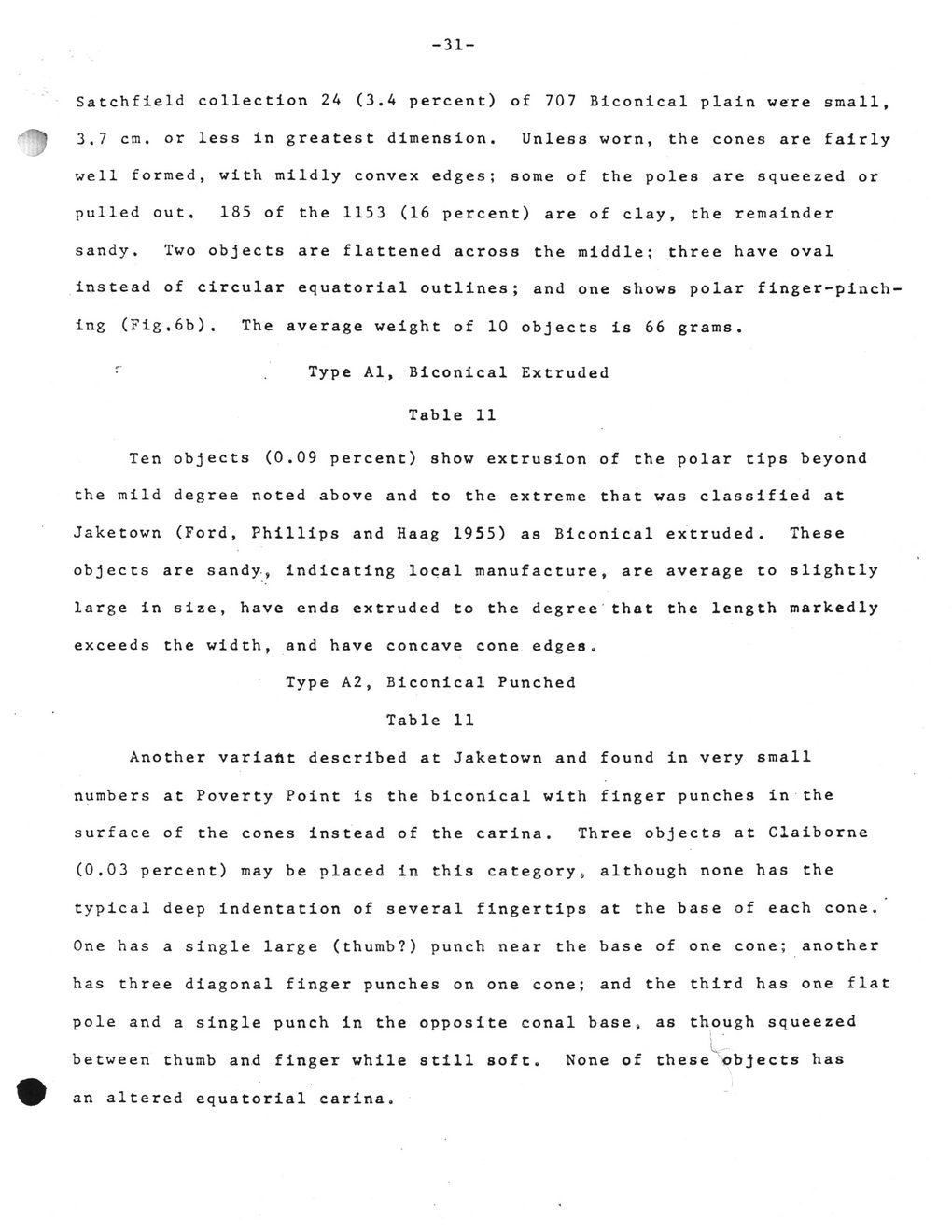This text was obtained via automated optical character recognition.
It has not been edited and may therefore contain several errors.
Satchfield collection 24 (3.4 percent) of 707 Biconical plain were small, 3.7 cm. or less in greatest dimension. Unless worn, the cones are fairly well formed, with mildly convex edges; some of the poles are squeezed or pulled out. 185 of the 1153 (16 percent) are of clay, the remainder sandy. Two objects are flattened across the middle; three have oval instead of circular equatorial outlines; and one shows polar finger-pinching (Fig.6b). The average weight of 10 objects is 66 grams. r Type Al, Biconical Extruded Table 11 Ten objects (0.09 percent) show extrusion of the polar tips beyond the mild degree noted above and to the extreme that was classified at Jaketown (Ford, Phillips and Haag 1955) as Biconical extruded. These objects are sandy, indicating local manufacture, are average to slightly large in size, have ends extruded to the degree that the length markedly exceeds the width, and have concave cone edges. Type A2, Biconical Punched Table 11 Another variant described at Jaketown and found in very small numbers at Poverty Point is the biconical with finger punches in the surface of the cones instead of the carina. Three objects at Claiborne (0,03 percent) may be placed in this category, although none has the typical deep indentation of several fingertips at the base of each cone. One has a single large (thumb?) punch near the base of one cone; another has three diagonal finger punches on one cone; and the third has one flat pole and a single punch in the opposite conal base, as though squeezed between thumb and finger while still soft. None of these objects has an altered equatorial carina.

Walden 039